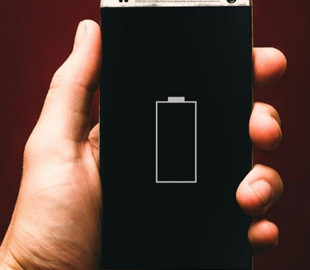
Battery – the fastest wearing part of a smartphone, like any other mobile device. And although over time batteries have learned to make them more energy-intensive and reliable, a few years of active smartphone use is quite enough for the battery to lose a significant part of its capacity. This happens regardless of the cost of the device. Unless the batteries in higher-quality and more expensive smartphones wear out more slowly.
Wear batteries
The reason for the loss of battery capacity is degradation. This happens due to the inevitable chemical processes inside the battery. Therefore, the loss of capacity is affected by exposure to low and high temperatures.
Each battery has its own resource, and the calculated battery for a certain number of charging cycles, which is usually specified by the manufacturer. On average, smartphone batteries are designed for approximately one thousand recharging cycles, which corresponds to three years of daily active use.
But this does not mean that the battery will fail after that. For example, Apple assures that the battery in the iPhone 15 will retain 80% capacity after a thousand charging cycles. Accordingly, batteries in cheap smartphones will lose a much larger percentage of capacity under the same conditions of use.
How to reduce battery wear
If the battery has already lost a significant portion of its initial capacity, then two options remain: battery replacement, for which in most cases you will have to contact a service workshop or purchase a new smartphone.
To extend the life of the battery, it is necessary to avoid operating the smartphone in very low and high temperatures. You should especially not charge your smartphone in the heat and under direct sunlight. Also, in hot conditions, it is not superfluous to abandon the fast charging mode in order to reduce the temperature of the battery and the smartphone in general.
The battery should also not be completely discharged, leaving it in this state for a long time. This situation is called deep discharge and can lead to the fact that the battery in the smartphone stops charging altogether. In this case, the battery will have to be removed from the smartphone and connected to a special device to charge it directly, bypassing the smartphone's power controllers.
How to increase autonomy
Over the years of using a smartphone, dozens and hundreds of programs are installed on it, but not all unnecessary programs are deleted in a timely manner. There are rare cases when an excessive number of programs running in the background accumulate in the smartphone's memory, consuming additional energy and thereby draining the battery that could otherwise be saved.
To increase the autonomy of the smartphone, you should delete unnecessary programs and turn off unnecessary functions. Some programs can run in the background, which additionally loads the smartphone and consumes the battery. Also, such functions as GPS and Bluetooth also require a certain amount of energy for their work, so in order to save battery power, they should be turned on only when necessary.
These actions can not only reduce the load on the smartphone and extend its autonomy. More intelligent use of battery life leads to the fact that the number of smartphone charges will be reduced, which means a longer service life.
Conclusion
The longer you intend to use your smartphone, the it is necessary to approach the conditions of its operation more carefully. But no matter how carefully the smartphone is used, over the years the battery will still lose part of its capacity, which does not depend on the volume of the battery, the price of the smartphone, or its manufacturer.

